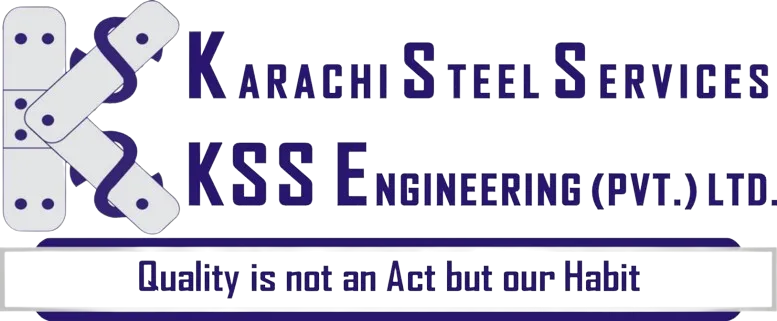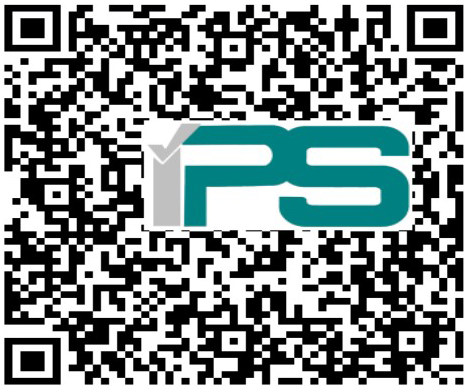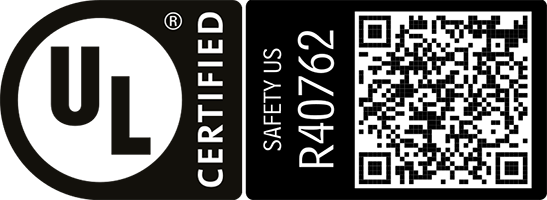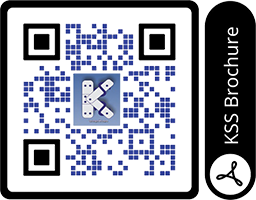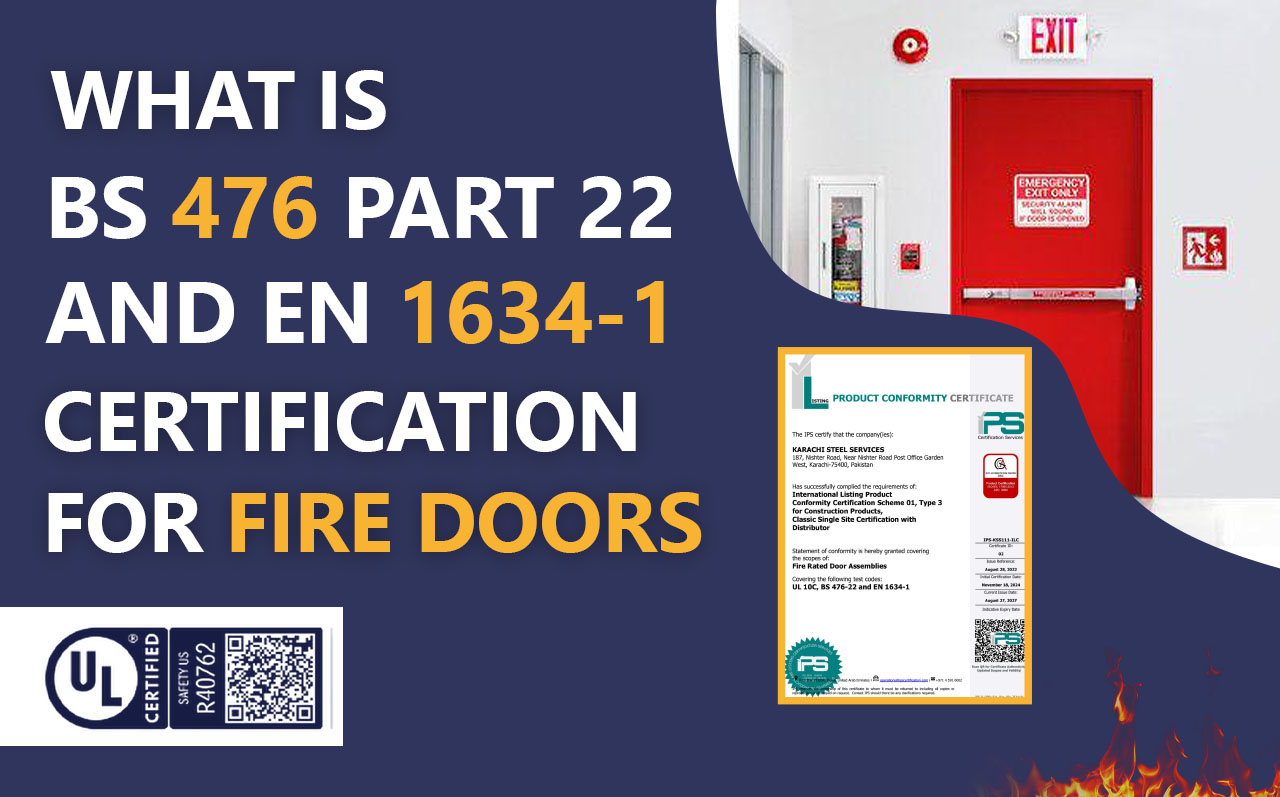In modern construction, fire safety isn’t just a priority—it’s a necessity. Fire doors serve as the first line of defense in containing flames and smoke, making their performance critical in safeguarding lives and property. 2 key certifications, “BS 476 Part 22” and “EN 1634-1,” are often referenced to ensure these doors meet rigorous safety requirements. But what do these certifications mean, and how do they differ? This blog will explore these standards, highlight their differences, and introduce Karachi Steel Services, the only fire door manufacturer in Pakistan with both certifications.
Key Differences Between BS 476 Part 22 and EN 1634-1
The following table highlights the key differences between these two certifications
| Aspects | BS 476 Part 22 | EN 1634-1 |
|---|---|---|
| Geographical Scope | Primarily used in the UK and Commonwealth countries. | Adopted across Europe and recognized globally. |
| Testing Focus | General fire resistance for building elements. | Specific to doors, shutters, and windows. |
| Standards Origin | British Standard (BS) developed in the UK. | European Norm (EN) aligned with EU regulations. |
| Testing Process | Includes integrity and insulation criteria. | Includes integrity, insulation, and smoke control. |
| Adoption in Markets | More prevalent in older regulations and systems. | Widely used in modern global fire safety requirements |
Why Are These Certifications Important?
Fire door certifications are critical for ensuring compliance with fire safety laws and regulations. They provide:
- Reliability: Assurance that fire doors will perform as expected during a fire.
- Compliance: Adherence to local and international fire safety standards.
- Safety: Protection for occupants and containment of fire damage.
For builders, architects, and manufacturers, using certified fire doors is essential for meeting safety requirements and avoiding legal or insurance complications.
KSS: The Leading Fire Door Manufacturer in Pakistan
In Pakistan, fire safety standards are becoming increasingly critical, and having certified fire doors is now a necessity in modern construction. KSS is the only fire door manufacturer in the country that holds both BS 476 Part 22 and EN 1634-1 certifications. This makes KSS a trusted partner for builders, architects, and organizations seeking high-quality fire doors that meet international standards.
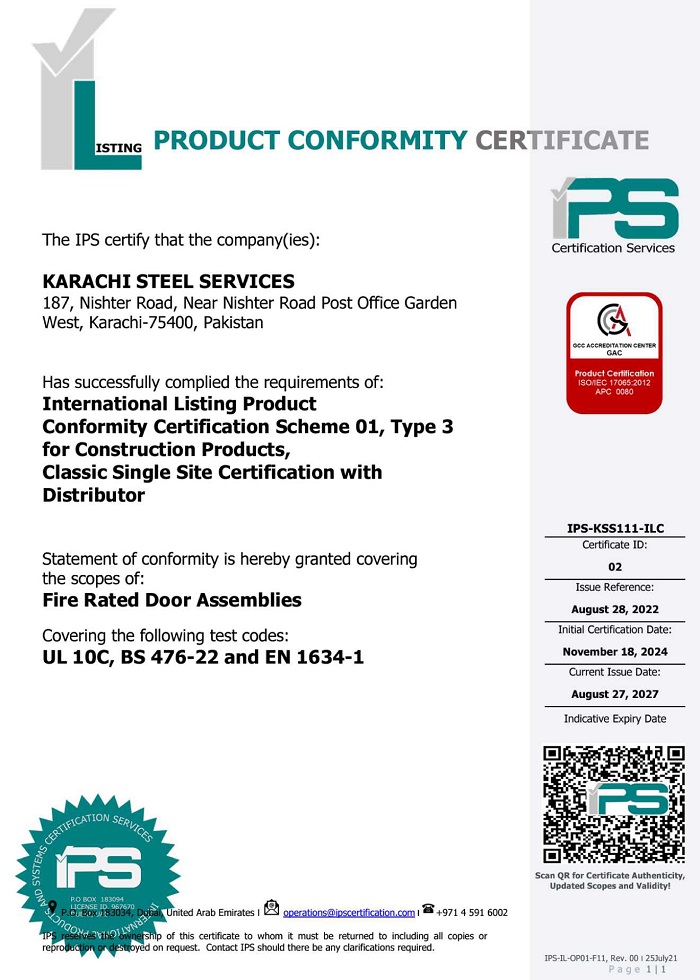
KSS’s dual certification ensures that their fire doors not only meet the stringent requirements of local regulations but also align with global benchmarks. By choosing KSS, you’re investing in safety, compliance, and peace of mind.
UL 10C! Another Certification for Fire Doors
UL 10C is a North American standard that assesses the performance of fire doors when exposed to fire conditions. This certification ensures that fire doors can withstand extreme heat and prevent the spread of flames and smoke for a specified period.
1) Fire Endurance: Evaluating the door’s ability to resist fire and remain functional.
2) Positive Pressure Testing: Simulating real-life fire conditions where hot gases and pressure build up on one side of the door.
3) Smoke Control: Ensuring the door prevents smoke leakage during a fire.
UL 10C certification is critical for projects in regions that adhere to North American safety standards and is increasingly recognized globally. KSS’s achievement of this certification underscores their commitment to meeting diverse international fire safety requirements.
Conclusion
BS 476 Part 22, EN 1634-1 and UL 10 vital certifications for ensuring the safety and performance of fire doors. While they share similarities, each standard has unique features tailored to specific regulatory and geographical contexts. Understanding these certifications allows architects, builders, and facility managers to make informed decisions that enhance building safety and compliance.
